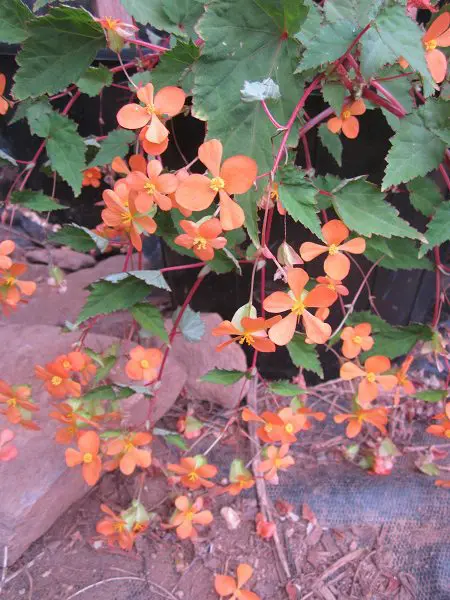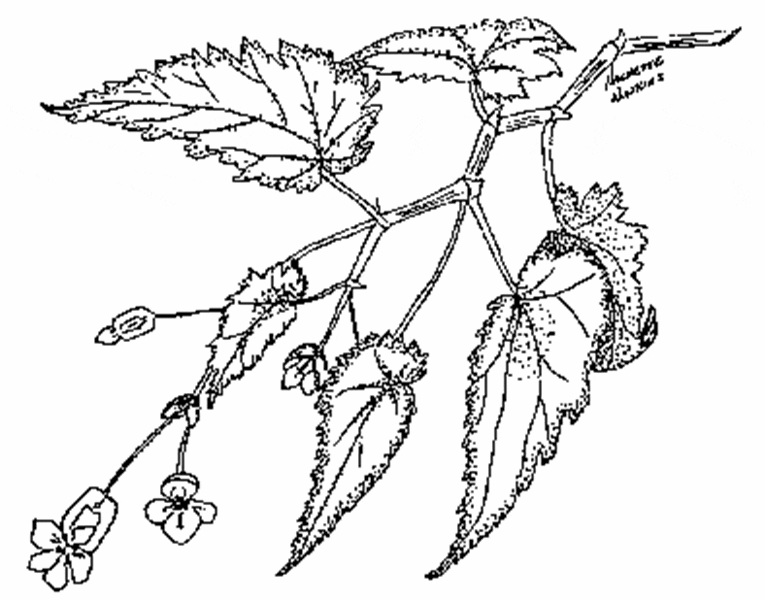B. sutherlandii is a native of Natal, and was discovered by P.C. Sutherland, Surveyor- General of Natal, in 1864. It was found growing in moist, shady places at an altitude of some 3,500 to 5,000 feet, where it blooms from December to January.
B. sutherlandii is tuberous, with a tuber whose size depends on the growing area. Stems are long and slender and delicate, and form trailing branches. Pale green leaves are slightly serrated on the edges and tipped with reddish-copper. The leaves appear to have a reddish dot at the apex where leaf and stem are joined. Its flowers are lovely, delicate, and orange.
CULTURE
This Begonia should be kept out of hot sun and drying winds. In fall it will form small bulbils at the leaf axils; these can be propagated for new plants. B. sutherlandii will go dormant, even when grown under lights, and will return to renew its growth for another season.



